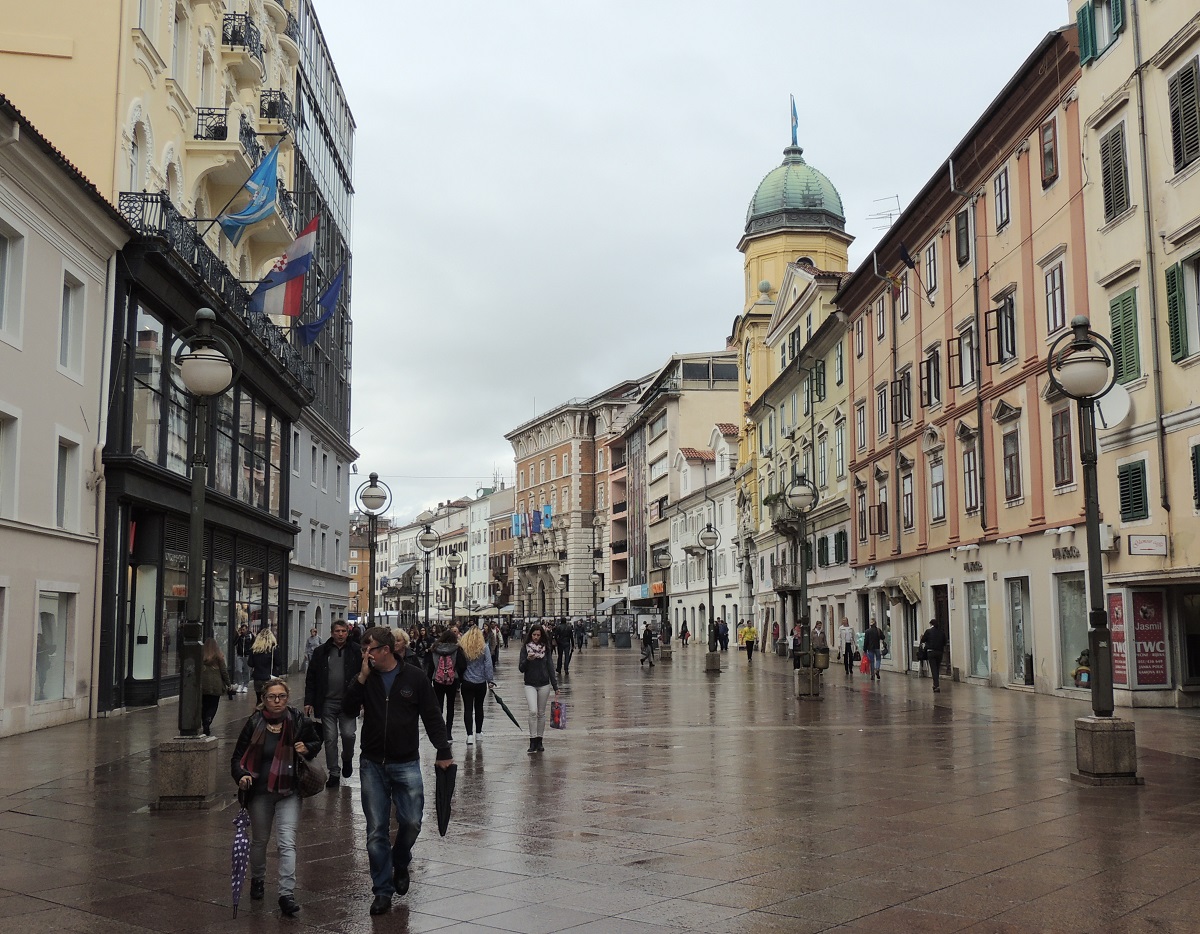Quick search
CTRL+K
Quick search
CTRL+K

Zadar is a city on the Croatian Adriatic coast. The city area has been inhabited for several thousand years with excavated finds from the 8th century BC. In the year 48, the city became a Roman colony, and in Roman times, Zadar was built according to the Roman model with, among other things, a forum and capitol with a temple. Later, the city became Venetian and was the administrative center of Dalmatia. After the fall of Venice in 1797, Zadar became Austrian until 1918, then Italian, before the city became part of Yugoslavia and later Croatia.
Today you can still see Zadar’s long history in the streetscape. The center of the old town is the Roman Forum, the largest of its kind on the eastern coast of the Adriatic. The Forum was founded by Emperor Gaius Julius Caesar Octavian and there are remains from Roman times. In the square you can also see the church Crkva sv. Donata, which was built from the 8th century. The circular church is Croatia’s largest pre-Romanesque construction.
Close to the Forum is Zadar’s impressive St. Anastasia Cathedral, which is Dalmatia’s largest church. The current cathedral dates back to the 12th and 13th centuries, while the facade was completed in 1324. There are also other old buildings in the old town, such as the Romanesque church Crkva sv. Krševana, consecrated in 1175, and several museums. On the Forum is the city’s interesting archaeological museum, and in several places in the city there are branches of Zadar’s National Museum.
It is also very exciting and beautiful to take a stroll around the center of Zadar. To the southeast you can see large parts of the city’s old city wall, and here is the beautifully preserved city gate Kopnena Vrata, which was built in the 16th century as Zadar’s main entrance. The city gate was part of the city’s fortress walls, which can still be seen, and which is included in UNESCO’s list of world cultural heritage. If you continue around the center, you can also enjoy some lovely views over the Adriatic Sea.

Split is a city with a beautiful location along the Croatian Adriatic coast, and it is a city and area with a long and interesting history that can be easily and immediately seen and enjoyed on a stroll around the city center.
The original town in the area was situated a bit north of modern-day Split, but then Diocletian became Roman ruler. Diocletian chose to resign as emperor to a colossal palace at his hometown, and it formed the center of the development of the present Split.

Rijeka is a city in the popular Istria and Kvarner area formed by two of the most visited regions in Croatia, where great experiences and sights in culture, nature, shopping and gastronomy await. The main cities are Pula on the west coast of Istria and Rijeka in the Gulf of Kvarner.
Rijeka is the largest city in the region, and the elegant Korzo is the main shopping street, and it winds through the city center. Around Korzo there are several sights such as the city’s well known tower, whose passage leads to both the cathedral and excavations from Rijeka’s past as a Roman settlement.
 Zadar, Croatia[/caption]
Zadar, Croatia[/caption]
Overview of Zadar
Zadar is a city on the Croatian Adriatic coast. The city area has been inhabited for several thousand years with excavated finds from the 8th century BC. In the year 48, the city became a Roman colony, and in Roman times, Zadar was built according to the Roman model with, among other things, a forum and capitol with a temple. Later, the city became Venetian and was the administrative center of Dalmatia. After the fall of Venice in 1797, Zadar became Austrian until 1918, then Italian, before the city became part of Yugoslavia and later Croatia.
Today you can still see Zadar’s long history in the streetscape. The center of the old town is the Roman Forum, the largest of its kind on the eastern coast of the Adriatic. The Forum was founded by Emperor Gaius Julius Caesar Octavian and there are remains from Roman times. In the square you can also see the church Crkva sv. Donata, which was built from the 8th century. The circular church is Croatia’s largest pre-Romanesque construction.
About the Whitehorse travel guide
Contents: Tours in the city + tours in the surrounding area
Published: Released soon
Author: Stig Albeck
Publisher: Vamados.com
Language: English
About the travel guide
The Whitehorse travel guide gives you an overview of the sights and activities of the Canadian city. Read about top sights and other sights, and get a tour guide with tour suggestions and detailed descriptions of all the city’s most important churches, monuments, mansions, museums, etc.
Whitehorse is waiting for you, and at vamados.com you can also find cheap flights and great deals on hotels for your trip. You just select your travel dates and then you get flight and accommodation suggestions in and around the city.
Read more about Whitehorse and Canada
Canada Travel Guide: https://vamados.com/canada
City tourism: https://visitwhite-horse.ca
Main Page: https://www.vamados.com/
Buy the travel guide
Click the “Add to Cart” button to purchase the travel guide. After that you will come to the payment, where you enter the purchase and payment information. Upon payment of the travel guide, you will immediately receive a receipt with a link to download your purchase. You can download the travel guide immediately or use the download link in the email later.
Use the travel guide
When you buy the travel guide to Whitehorse you get the book online so you can have it on your phone, tablet or computer – and of course you can choose to print it. Use the maps and tour suggestions and you will have a good and content-rich journey.

Similar to Zadar Travel Guide
